News & Blogs
How Chef Mori first learned about TREHA®.
Chef Mori's favorite benefits of TREHA®.
Chef Mori explains her creations with TREHA®: Kudzukiri (arrowroot jelly) with Cherry Blossom, Yuzu no Ukishima (Yuzu flavored Japanese steamed cake), Strawberry Mochi Ice Cream Wraps, and Matcha Green Tea Agar Jelly.
In this blog, we touch on diverse topics about Japanese food cultures, practices together with the culinary secret, TREHA®, and its important role in the Japanese food industry. We hope our blog helps you obtain in-depth knowledge of the secrets and science behind Japanese cuisine, shared from our kitchen, to yours.
Today, we would like to present an interview with Chef Mayumi Mori, a talented Japanese confectionery chef of Nichigetudo, Tokyo. The interview took place on July 15th, 2019.
“Nichigetsudo" is a Japanese sweets shop located in Nihonbashi next to Hayashibara’s Tokyo branch. Since it was founded in the early Meiji era (around 1880), the locals have loved the shop’s traditional Japanese sweets and other products such as Sekihan (steamed rice with red beans), round mochi (rice cakes) for the New Year, and other festive occasions for a long time.
Ms. Mayumi Mori is an expert in traditional Japanese confectionery who holds first-class certification for techniques, the national qualification, and a title of “Excellent Wagashi Artisan" certified by the Japan Wagashi (Japanese confectionery) Association. She also has won numerous contests.
How did you first learn about TREHA®? What made you start using it?
My first encounter with TREHA® was at a Japanese confectionery supplier I worked with, who was using TREHA® for time-saving and reducing food waste. TREHA® surprised me by maintaining the conditions of shaped rice cake dough after frozen storage because, by experience, I knew rice cake dough usually dries out and cracks when stored frozen. TREHA® allows me to make the shaped dough in advance and cook them to prepare fresh rice cake balls when necessary. This beneficial functionality has stuck in my mind since then.
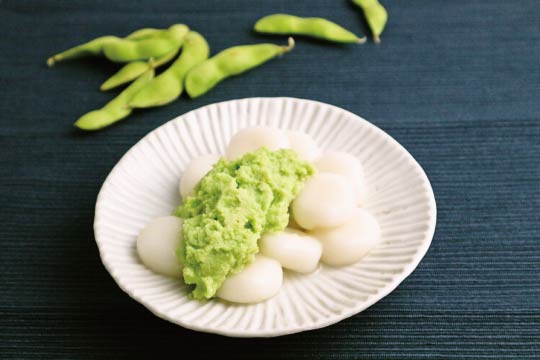
Which raw materials do you use TREHA® for? What are your favorite functions of TREHA®?
I say 90% of products in my shop contain TREHA® as is formulated in bean paste, a frequently used element in Japanese confectionery. One of the best functions of TREHA® is moisture retention in the bean paste, followed by delaying starch retrogradation and improving freeze-thaw stability. In addition, TREHA® brings out the full flavor of ingredients used in sweets, even with a small amount. This multi-functionality presents a significant advantage to chefs, including myself. I can utilize many benefits from TREHA® single-handedly.
Do you use TREHA® for extending the shelf life of the products? Have you experienced any cost savings from TREHA®?
I take full advantage of TREHA® for improving freeze-thaw stability, resulting in extended shelf life. Since TREHA made many products freeze-thaw stable, food loss at my shop is minimum. I can quickly replenish the products almost sold out by thawing frozen inventory. TREHA® allows me to efficiently coordinate production schedules because I can pre-make many items when my shop is relatively quiet. This gives me peace of mind since I don’t have to worry about food waste. TREHA® certainly improved our productivity and work efficiency.
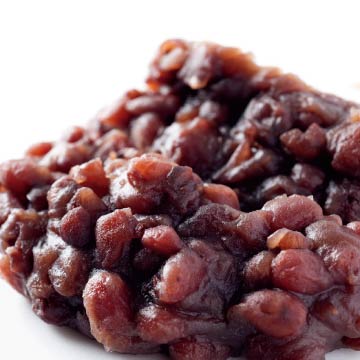
Would you explain your Kudzukiri with Cherry Blossom recipe, please?
Kudzukiri is arrowroot jelly made by cooking arrowroot starch solution. The jelly is cut into strips and served with syrup. Each kuzukiri strip can be easily picked up with chopsticks and dipped into a syrup, described as a dessert version of noodles like soba. The unique texture is refreshing and enjoyable. Since cooking time is only about one minute, this chilled Japanese dessert can be served quickly if the batter is prepared in advance. This recipe includes two syrups: traditional brown sugar syrup and cherry blossom syrup, featuring a beautiful color contrast. A recipe of cherry blossom syrup can be replaced with plum wine or fruits syrup.
TREHA® maintains a fresh texture and mouthfeel of Kudzukiri by inhibiting arrowroot starch from staling, which also contributes to keeping the transparency of jelly strips since they become turbid as they lose their freshness. Staling can be accelerated since the dessert is usually served at cool temperatures. TREHA® is remarkably helpful to overcome the challenges in maintaining the quality of Kudzukiri under refrigeration.
TREHA® masks brown sugar-specific astringency and sharp sweetness. TREHA® brings out the full flavor of cherry blossom in the cherry blossom syrup.
Click here for the recipe.
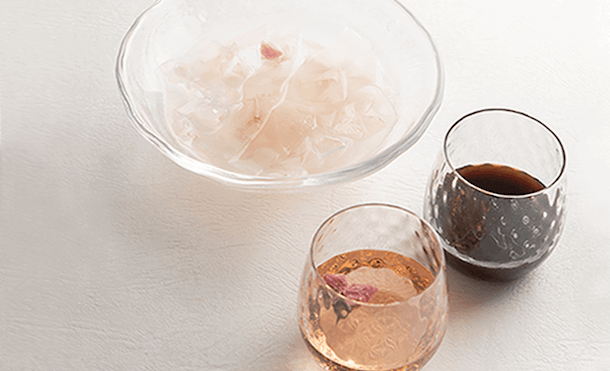
Please explain your Yuzu no Ukishima (Yuzu flavored Japanese steamed cake) recipe.
Ukishima is a steamed cake including a bean paste and meringue, which features a fine, moist texture. Ukishima means “floating island” in Japanese, named after how the cake dough rises during the cooking process. Traditional Japanese pastry chefs often employ Ukishima to express four seasons by layering multiple cakes accented with dried fruits or seasonal colors.
TREHA® makes meringue with fine and consistent foams, making the cake maintain a smooth, fluffy, and moist texture without losing its volume. Without TREHA®, Ukishima tends to have inconsistent air pockets caused by irregular-sized air bubbles in meringue, inviting uneven quality in the production.
TREHA® modestly sweetens the product, which makes a light and clean tasting cake to bring out refreshing yuzu citrus to its fullest.
Ukishima contains rice flour, which is vulnerable to drying out. TREHA® delays the staling process while maintaining the dense and moist texture even after freeze-thaw.
Click here for the recipe.
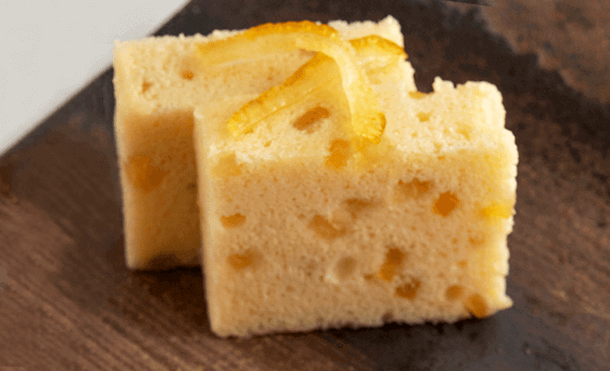
Would you explain your Strawberry Mochi Ice Cream Wraps recipe, please?
Mochi dough in this recipe has many applications. Ice cream can be substituted with fresh seasonal fruits. Various sauces can be paired to complement such fillings. In addition, the mochi dough is also freeze-thaw stable, requiring only 30 minutes to thaw at room temperature before use. To add a distinctive fluffy texture, combine the dough with Italian meringue at the end of step 3 in the recipe.
Previously the shelf life of mochi was short, but thanks to TREHA®, mochi became freeze-thaw stable. This is a groundbreaking development for the traditional Japanese confectionery industry, allowing more effective production control and reducing food waste.
Mochi tends to harden in low temperatures. TREHA® maintains mochi’s soft and chewy texture when served with ice cream.
TREHA® also brings out the flavor of strawberry, enhancing the freshness. TREHA® allows the product to take a notch up in the overall quality.
Click here for the recipe.
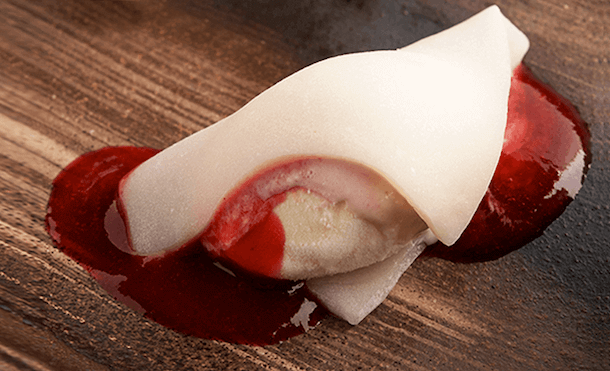
Would you explain your Matcha Agar Jelly recipe, please?
TREHA® reduces water release from jelly containing high water content and gelling agents. Though you may not see the difference between the products with and without TREHA® on the first day of production, it becomes prominent on the next day, even more so on the day after that. This indicates two benefits for the operations: extending the product quality fit to sell while reducing food waste and maintaining the moist, fresh texture of the product.
TREHA® inhibits discoloration of Matcha. Matcha green tea powder, a mainstay ingredient for Japanese confectionery, tends to fade by heating or time course. Fading or browning of matcha is inhibited by adding TREHA®.
Click here for the recipe.
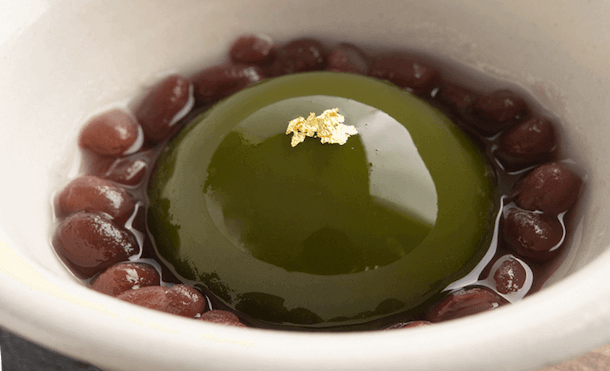
Did you find this blog interesting?
Please share it with your friends in the food service industry.
We regularly update the blog about the food culture of Japan, where TREHA® was discovered for culinary applications.
Click here and send us a message to subscribe.
Or hit us up on Instagram @trehalose_sensei!
You might also be interested in:
Exclusive interview with Chef Ishiguro, the first prize winner of the Charles Proust 2018, a prestigious confectionery competition
Exclusive interview with Chef Yokota, a prominent pastry chef who has been at the forefront of the industry in Japan for over 40 years
Exclusive interview with Chef BAE, the Chocolate prize winner at the Coupe du Monde de la Pâtisserie 2017
Japanese traditional food series 1: Inoko mochi (亥の子餅)
Japanese traditional food series 9: Japanese sweets offered to spirits of ancestors during the equinoctial weeks
Japanese traditional food series 11: Sweet delights to celebrate Children's Day - Kashiwa Mochi (柏餅) and Chimaki (ちまき)
Mochi ice cream, one of the trendiest sweets on the planet!

